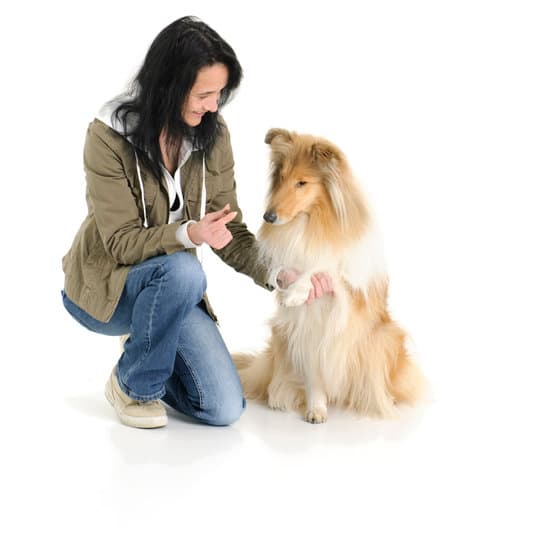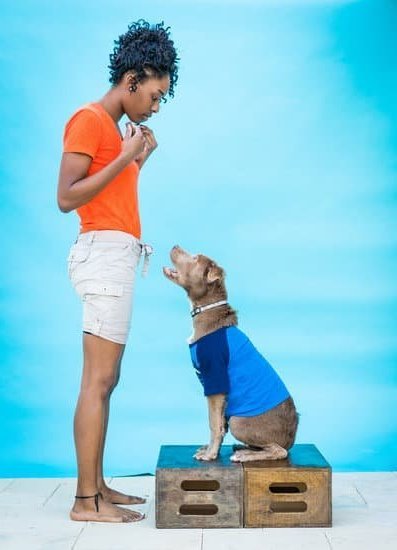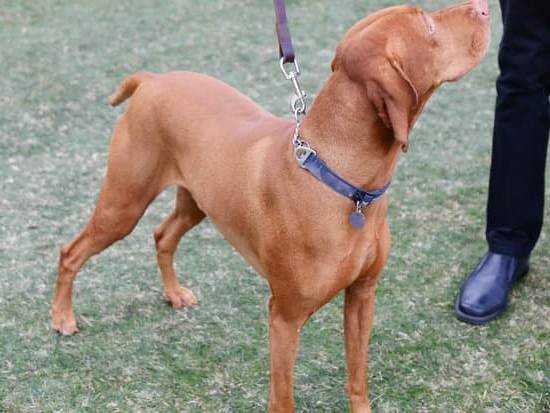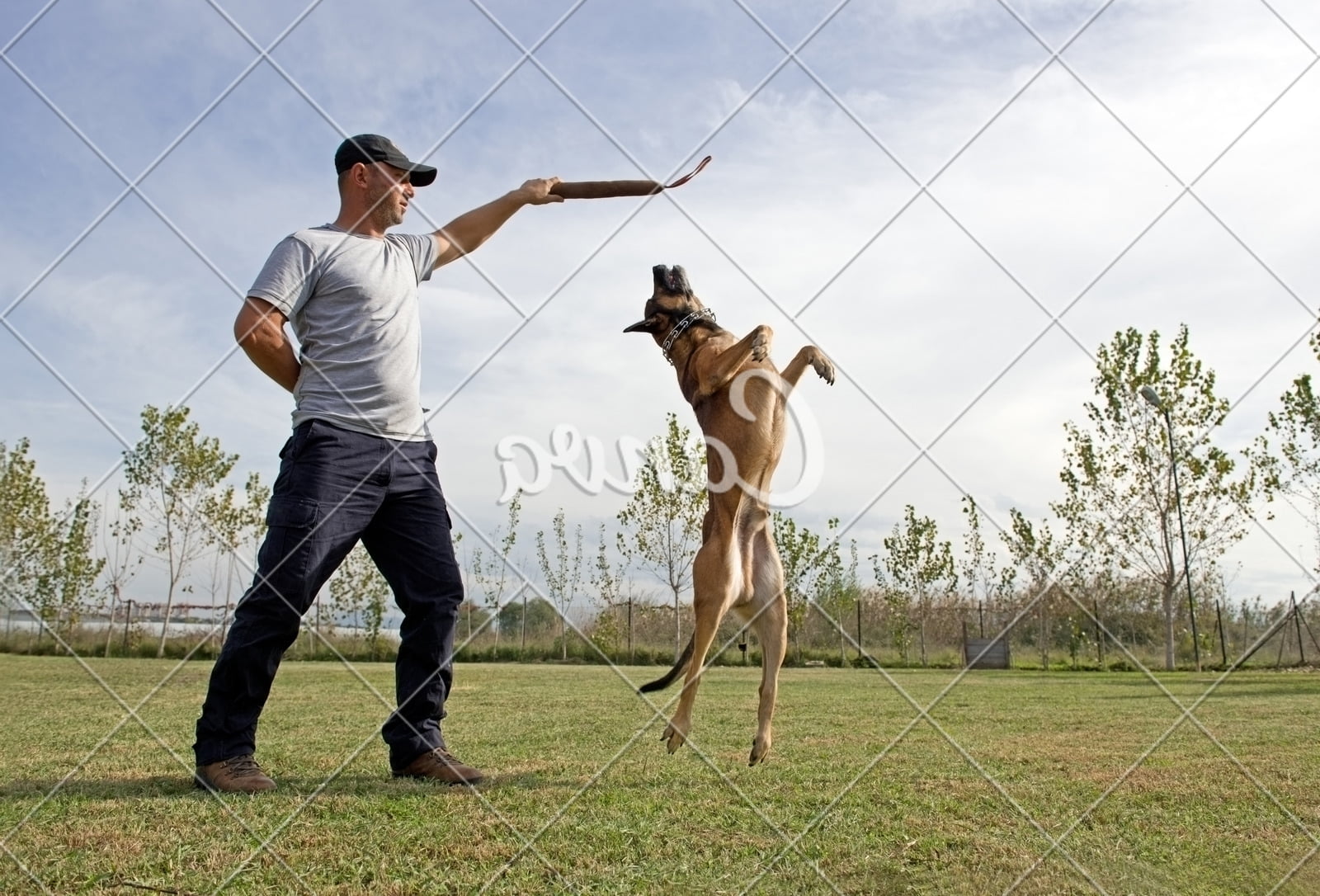Do you find yourself constantly frustrated or concerned about your neighbor’s dog’s behavior? Have you tried talking to your neighbor, but it seems like nothing is improving? In this article, we will discuss how to use a dog training device on a neighbor dog. From understanding the need for using such a device to addressing common behavioral issues and effectively communicating with your neighbor, we will provide you with valuable tips and techniques for managing the situation.
When living in close proximity to neighbors with dogs that exhibit unwanted behavior, it can be challenging to find a peaceful resolution. Using a dog training device on a neighbor’s dog can help address behavioral issues without causing harm to the animal. It is important to approach this situation with empathy and patience, aiming for a positive outcome for both you and your neighbor.
In the following sections, we will explore the importance of choosing the right dog training device, proper use and safety measures, as well as introducing the device to the neighbor’s dog. Additionally, we will discuss using positive reinforcement techniques and how to effectively communicate with your neighbor about using a training device.
Whether it’s excessive barking, aggression towards other pets or people, or digging up gardens, we will also address common behavioral issues and provide tips for handling potential challenges when using these devices. With this comprehensive guide, you’ll be equipped with the necessary knowledge to confidently manage the situation while maintaining respect for both your neighbors and their pets.
Choosing the Right Dog Training Device for Neighbor Dogs
When it comes to using a dog training device on a neighbor’s dog, it’s important to choose the right device for the specific behavior issue you are trying to address. Whether it’s excessive barking, digging, or jumping, there are a variety of training devices available that can help correct these behaviors. Here are some options to consider:
- Ultrasonic Bark Control Devices: These devices emit a high-pitched sound when they detect barking, which is unpleasant for dogs and can discourage them from continuing to bark excessively.
- Citronella Collars: Citronella collars release a burst of citronella scent when they detect barking, which many dogs find off-putting and can deter them from barking unnecessarily.
- Remote Training Collars: These collars allow you to deliver a mild static correction or vibration to your neighbor’s dog from a distance, providing an effective way to interrupt unwanted behaviors.
It’s important to choose a training device that is appropriate for the size and temperament of the neighbor dog, as well as the specific behavior you are trying to address. Additionally, always make sure to use humane and safe methods when using any training device on a neighbor’s dog.
When selecting the right training device for your neighbor’s dog, consider their individual needs and consult with a professional trainer if needed. By choosing the right tool for the job, you can effectively address behavioral issues in a safe and humane manner.
Finally, always prioritize safety and effectiveness when choosing a dog training device for your neighbor’s dog. It’s essential that any chosen device is used correctly and responsibly in order not only to be successful in correcting unwanted behaviors but also in ensuring the well-being of the pet.
Proper Use and Safety Measures of Dog Training Devices
When it comes to using a dog training device on a neighbor’s dog, it is important to understand the proper use and safety measures to ensure that both the dog and the handler are safe. Whether you are trying to address excessive barking, jumping, or other behavioral issues, using a training device requires knowledge and caution. Here are some guidelines for the proper use of dog training devices on neighbor dogs:
- Understand the specific type of dog training device you are using (e.g. ultrasonic bark control devices, citronella spray collars) and how they work.
- Read the manufacturer’s instructions carefully before using the device.
- Avoid using high-intensity modes or settings unless absolutely necessary, as these can be harmful or distressing to the dog.
It is also crucial to consider safety measures when using a dog training device on a neighbor’s dog. Always keep in mind that not all dogs respond well to training devices, and some may have medical conditions or sensitivities that could be exacerbated by such devices. Ensure that you:
- Use the training device in accordance with local laws and regulations regarding animal welfare
- Seek advice from a professional trainer or veterinarian if you are unsure about how to safely use a particular device on your neighbor’s dog
- Monitor the neighbor’s dog’s response closely when introducing a new training device
- Approach your neighbor with respect and concern for their pet’s well-being
By prioritizing safety and responsibility when using a dog training device on your neighbor’s dog, you can help address behavioral issues while maintaining good relations with your neighbors.
Introducing the Dog Training Device to the Neighbor Dog
When it comes to using a dog training device on a neighbor’s dog, it is crucial to understand the importance of introducing the device properly. The goal is to ensure that the neighbor’s dog responds positively to the training and that it does not cause any harm or distress to the animal. Introducing the device in the right way can make a significant difference in how effective it is in modifying the behavior of the neighbor’s dog.
First and foremost, it is essential to communicate with your neighbor about your intention to use a training device on their dog. Explain why you believe it is necessary and assure them that you have chosen a safe and humane device. By involving them in the process from the beginning, you can establish trust and cooperation, which will ultimately make the training more successful.
Once you have obtained permission from your neighbor, it is time to familiarize the neighbor’s dog with the training device. Start by allowing the dog to inspect and sniff the device so that they become comfortable with its presence.
You can also use positive reinforcement techniques such as offering treats or praise when they show curiosity towards the device. This will create a positive association with the training tool, making it more likely for them to respond well during training sessions.
In addition, always follow manufacturer instructions for operating any dog training device. This will ensure both safety for you, your neighbor’s pet and any others who may come into contact with it.
By taking these steps, you can effectively introduce a dog training device to a neighbor’s pet in a way that promotes safety and positive behavior modification while respecting both your neighbor’s property as well as their pet ownership rights.
Using Positive Reinforcement Techniques With the Dog Training Device
When using a dog training device on a neighbor’s dog, it is crucial to employ positive reinforcement techniques. Positive reinforcement involves rewarding the dog for good behavior, rather than punishing them for undesirable behavior. This can be achieved by using treats, toys, or verbal praise when the dog responds appropriately to the training device.
One effective positive reinforcement technique is clicker training. This involves using a clicker to make a distinctive sound whenever the neighbor dog displays desirable behavior. The clicker is then followed by a reward, such as a small treat. Over time, the dog will associate the sound of the clicker with receiving a reward and will be more likely to repeat the desired behavior.
It is important to note that positive reinforcement should be used in conjunction with the dog training device, rather than relying solely on the device itself. This will help create a positive association between the device and good behavior in the neighbor’s dog.
| Positive Reinforcement Technique | Description |
|---|---|
| Clicker Training | A method of training that uses a distinct sound (click) followed by a reward to reinforce positive behavior. |
| Reward-based Training | Using treats, toys, or verbal praise to positively reinforce good behavior in the neighbor’s dog. |
By implementing positive reinforcement techniques along with the use of a dog training device, you can effectively train your neighbor’s dog in a humane and ethical manner. Remember to always use patience and consistency when working with any training device or method. These methods not only benefit your neighbor’s dog but also contribute to maintaining amicable relationships within your community.
Addressing Common Behavioral Issues With Neighbor Dogs Using Training Devices
When it comes to addressing common behavioral issues with neighbor dogs using training devices, it’s important to first understand the specific problem you are trying to address. Whether it’s excessive barking, jumping, aggression, or other unwanted behaviors, using a dog training device can be an effective tool in helping to correct these issues. However, it’s crucial to use the device properly and in conjunction with positive reinforcement techniques.
One important factor to consider when addressing behavioral issues with neighbor dogs is choosing the right training device. There are various options available, including citronella collars, ultrasonic devices, and vibrating collars. It’s essential to select a device that is suitable for the specific behavioral issue and size of the dog. For example, a citronella collar may be effective for deterring excessive barking, while an ultrasonic device could help discourage digging or jumping.
Properly introducing the dog training device to the neighbor dog is key to its effectiveness. This includes getting the dog accustomed to the device through positive association and gradually increasing its use.
Additionally, using positive reinforcement techniques such as treats and praise when the dog displays desired behaviors can further enhance the effectiveness of the training device. Communicating openly with your neighbor about your intentions to use a training device on their dog is also crucial for maintaining a good relationship and ensuring that both parties are on board with the approach.
| Behavioral Issue | Recommended Training Device |
|---|---|
| Excessive Barking | Citronella Collar |
| Jumping/Digging | Ultrasonic Device |
Effectively Communicating With the Neighbor About Using a Dog Training Device
Communicating with your neighbor about using a dog training device is crucial in maintaining a positive relationship and ensuring the safety and well-being of their dog. It’s important to approach this conversation with empathy and understanding, as some neighbors may be sensitive or defensive when it comes to their pets. Start by expressing your concerns in a respectful manner and explaining how the dog training device can help address any behavioral issues that may be causing disturbances.
When communicating with your neighbor, it’s essential to provide clear and factual information about the specific dog training device you plan to use. Discuss the benefits of using such a device, such as promoting good behavior, reducing excessive barking, or preventing aggressive tendencies. Assure your neighbor that the goal is not to harm or punish their dog but rather to foster positive behaviors that will benefit both the pet and the community.
In addition, be open to listening to your neighbor’s concerns or objections regarding the use of a dog training device on their pet. Address any misconceptions they may have and offer to demonstrate how the device works in a safe and controlled environment.
Emphasize that you are committed to finding a solution that is mutually beneficial for everyone involved, including their beloved pet. By effectively communicating with your neighbor, you can work together towards resolving any issues while maintaining a harmonious relationship within the neighborhood.
Monitoring and Assessing the Progress of Using Dog Training Devices on Neighbor Dog
Observing Behavior Changes
Once you have started using the dog training device on your neighbor’s dog, it is important to monitor and assess the progress of the training. Look out for any changes in the behavior of the dog, such as reduced barking, improved obedience, or decreased aggression. Keep a record of any noticeable changes in their behavior to track their progress.
Seeking Feedback From Neighbor
It is crucial to communicate with your neighbor about the progress of using the dog training device on their pet. Check in with them regularly to discuss any behavioral changes they have noticed in their dog since you began using the device. This could also serve as an opportunity to address any concerns or potential issues that may have arisen during the training process.
Adjusting Training Methods
Assess whether the dog is responding positively to the training device. If you find that there are no significant improvements in the animal’s behavior or if it seems to be causing distress, it may be necessary to reevaluate your approach. Consider adjusting your training methods and consulting with a professional trainer for additional guidance on how to effectively use the dog training device on your neighbor’s pet.
Tips for Handling Potential Challenges When Using Dog Training Devices on Neighbor Dogs
In conclusion, using a dog training device on a neighbor’s dog can be an effective solution for addressing behavioral issues and ensuring a peaceful coexistence in the neighborhood. However, it is essential to approach this process with caution and responsibility.
Understanding the need for using a dog training device is the first step in addressing any behavioral issues exhibited by the neighbor’s dog. Whether it’s excessive barking, aggression, or destructive behavior, using a training device can help correct these behaviors and improve the overall quality of life for both the dog and its human neighbors.
Choosing the right dog training device is crucial in ensuring its effectiveness and safety. From ultrasonic bark control devices to remote training collars, there are various options available. Proper use and safety measures of these devices must be understood to avoid causing harm or distress to the neighbor’s dog. Introducing the device to the neighbor’s dog and using positive reinforcement techniques are also important steps in effectively using a training device.
It is also important to communicate effectively with the neighbor about your intention to use a training device on their dog. By discussing the issue calmly and providing information about how the device works, you can ensure that they are aware of your efforts to address any behavioral issues. Additionally, monitoring and assessing progress is crucial in determining whether the training device is having the desired effect.
Lastly, being prepared to handle potential challenges that may arise when using a training device on a neighbor’s dog is key to managing any unexpected situations that may occur during this process. Overall, when used responsibly and with consideration for safety and effectiveness, a dog training device can be a valuable tool in improving behavioral issues in neighbor dogs.
Frequently Asked Questions
Do Anti Barking Devices Work on Neighbors Dogs?
Anti barking devices can be effective in deterring a neighbor’s dog from excessive barking. However, the success of these devices largely depends on the specific situation and the compliance of the dog’s owner in using the device properly.
How Do You Use an Anti Barking Device on a Dog?
Using an anti barking device on a dog typically involves placing or activating the device within close proximity to the dog when it starts barking. This may include handheld devices, collars, or stationary units that emit sounds or vibrations to interrupt the barking behavior.
Are Ultrasonic Dog Barking Devices Legal?
The legality of ultrasonic dog barking devices varies by location. In some areas, there may be restrictions or regulations regarding the use of such devices due to concerns about potential harm or discomfort to dogs. It’s important to research and understand local laws before using an ultrasonic dog barking device.

Welcome to the blog! I am a professional dog trainer and have been working with dogs for many years. In this blog, I will be discussing various topics related to dog training, including tips, tricks, and advice. I hope you find this information helpful and informative. Thanks for reading!





